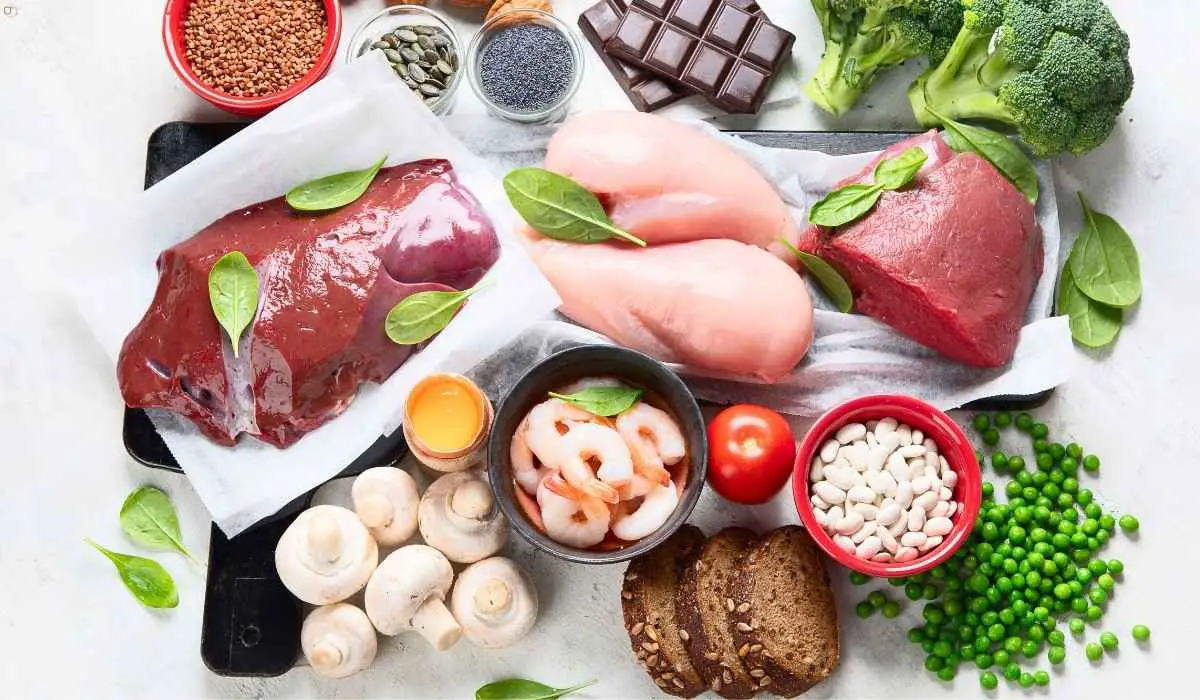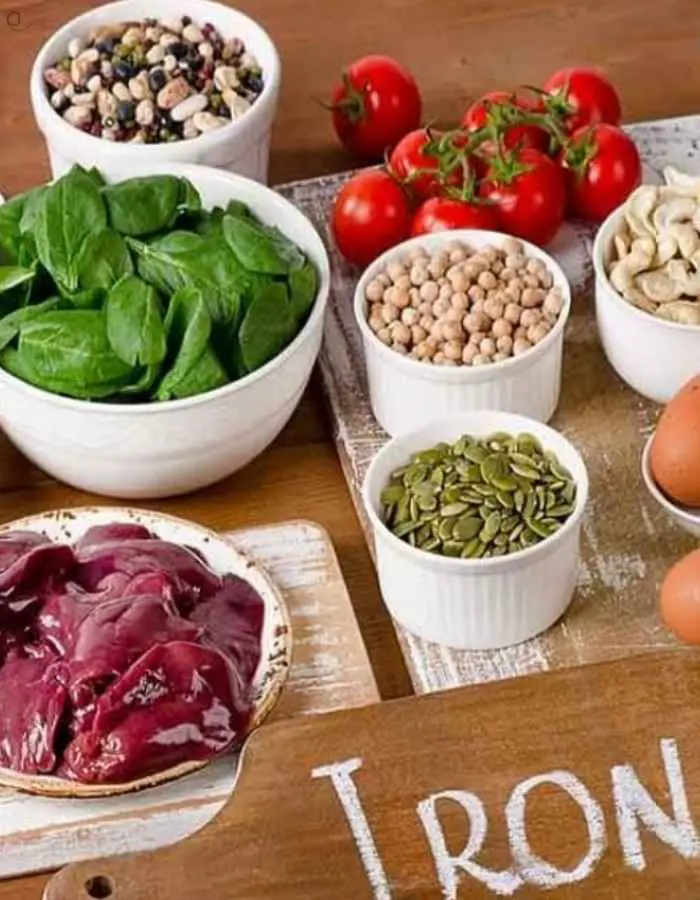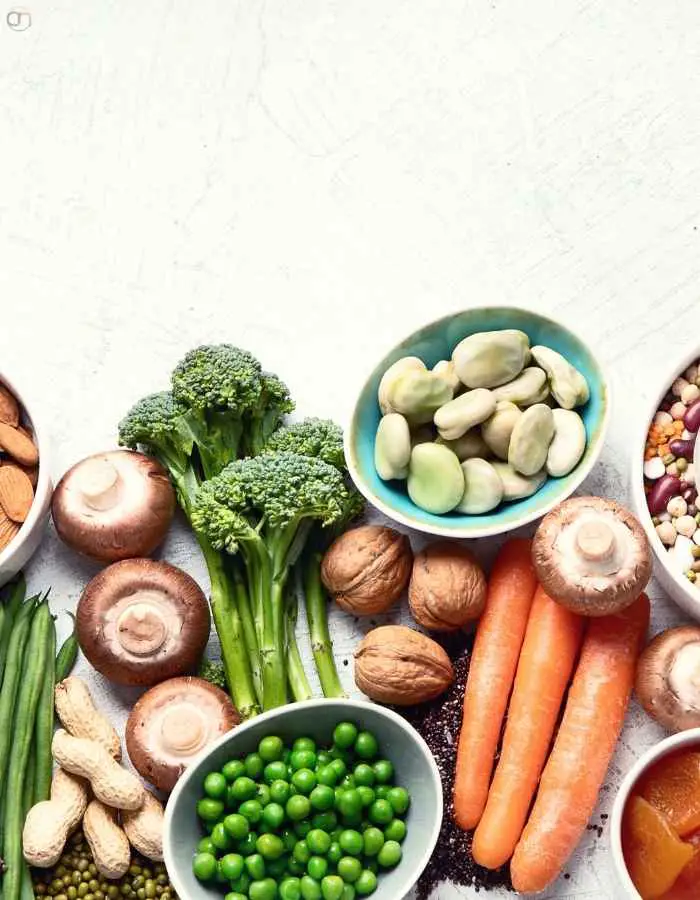Feeling tired or low on energy? You might need more iron in your diet! Iron is a vital mineral that helps carry oxygen throughout your body and supports overall health.
If you’re looking to prevent anemia, boost energy levels, or support muscle function, eating iron-rich foods can make a big difference.
In this blog, we’ll explore the top high iron foods, tips to improve iron absorption, and how to create meals that help you stay strong and energized every day.
Types of Iron: Heme vs. Non-Heme:
When it comes to iron in our diet, not all sources are the same. Iron is found in two forms: heme iron and non-heme iron—and understanding the difference can help you make smarter food choices.
Heme Iron is found only in animal-based foods like red meat, poultry, and seafood. It’s more easily absorbed by the body, making it an efficient way to boost your iron levels. This type of iron is especially beneficial for people with higher iron needs, such as pregnant women or those with anemia.
Non-Heme Iron, on the other hand, comes from plant-based foods like lentils, spinach, tofu, and fortified grains. While it’s still a great source of iron, it’s not absorbed as efficiently. The good news? Pairing non-heme iron with vitamin C-rich foods (like oranges, bell peppers, or strawberries) can greatly improve absorption.
In case you’re a meat-eater or vegetarian, including a mix of both types of iron in your diet ensures your body gets the nutrients it needs to stay energized and healthy.
Top High Iron Foods:
Looking to boost your iron levels naturally? Whether you eat meat or follow a plant-based diet, there are plenty of delicious foods rich in iron to keep your body energized and strong. Here’s a mix of the best heme and non-heme iron sources you can easily add to your meals:
Heme Iron Sources (Animal-Based)
-
Beef liver
-
Chicken liver
-
Lean beef
-
Turkey (especially dark meat)
-
Chicken
-
Canned sardines
-
Tuna
-
Oysters
-
Clams
-
Eggs
Non-Heme Iron Sources (Plant-Based)
-
Lentils
-
Chickpeas
-
Tofu
-
Cooked spinach
-
Pumpkin seeds
-
Quinoa
-
Fortified breakfast cereals
-
Black beans
-
Baked potatoes (with skin)
-
Cashews
Tip: For better iron absorption, pair plant-based iron foods with vitamin C sources like oranges, strawberries, or bell peppers.
How to Improve Iron Absorption:
Eating iron-rich foods is important—but making sure your body actually absorbs the iron is key. Here are simple and effective ways to boost iron absorption from your meals:
-
Pair Iron with Vitamin C
Combine iron-rich foods with vitamin C sources (like citrus fruits, strawberries, tomatoes, or bell peppers) to enhance non-heme iron absorption. -
Avoid Tea and Coffee with Meals
Tannins in tea and coffee can inhibit iron absorption. Enjoy these beverages between meals instead. -
Limit Calcium at Iron-Rich Meals
Calcium competes with iron for absorption, so try not to pair high-calcium foods (like dairy or supplements) with your main iron sources. -
Cook with Cast Iron Pans
Cooking acidic foods (like tomato sauce) in cast iron cookware can increase the iron content of your meal. -
Soak or Sprout Legumes and Grains
This reduces phytates—compounds that can block iron absorption—making the iron in plant foods more bioavailable. -
Use Fermented Foods
Fermentation helps break down inhibitors and enhances the body’s ability to absorb minerals, including iron.
Here are three simple, tasty, and High Iron Foods ideas to help you boost your intake naturally:
-
Breakfast:
Fortified whole grain cereal + strawberries + a glass of orange juice
(Rich in non-heme iron and enhanced with vitamin C for better absorption) -
Lunch:
Lentil and spinach salad with cherry tomatoes + lemon vinaigrette + a boiled egg
(Iron from lentils and spinach, with added heme iron from egg and vitamin C from tomatoes) -
Dinner:
Grilled lean steak + quinoa + steamed broccoli with lemon
(Heme iron from beef, non-heme iron from quinoa and broccoli, plus vitamin C)
Key Takeaway:
- Iron is essential for your energy and health—but it’s not just about eating iron-rich foods.
- Boost your absorption with smart food pairings, avoid blockers like tea at meals, and enjoy a mix of both heme and non-heme sources.
- Save this guide, share it, and follow us on Pinterest for more wellness tips!
Read Next: 30 Omega 3 Foods
FAQs:
1. What are the symptoms of iron deficiency?
Fatigue, pale skin, dizziness, and shortness of breath are common signs. Always consult a doctor for diagnosis.
2. Can vegetarians get enough iron?
Yes! By focusing on non-heme iron foods and pairing them with vitamin C-rich items, vegetarians can meet their iron needs.
3. Is too much iron harmful?
Yes. Excessive iron can be toxic. It’s best to get iron through food and use supplements only under medical supervision.
4. Does cooking method affect iron content?
Yes. Cooking with cast iron pans can boost iron in food, especially with acidic ingredients.
5. What blocks iron absorption?
Calcium, tannins (in tea/coffee), and phytates (in some grains/legumes) can reduce absorption. Timing and food combinations matter.
6. Are iron supplements necessary?
Only if recommended by a healthcare provider. Most people can meet their needs through a well-balanced diet.




